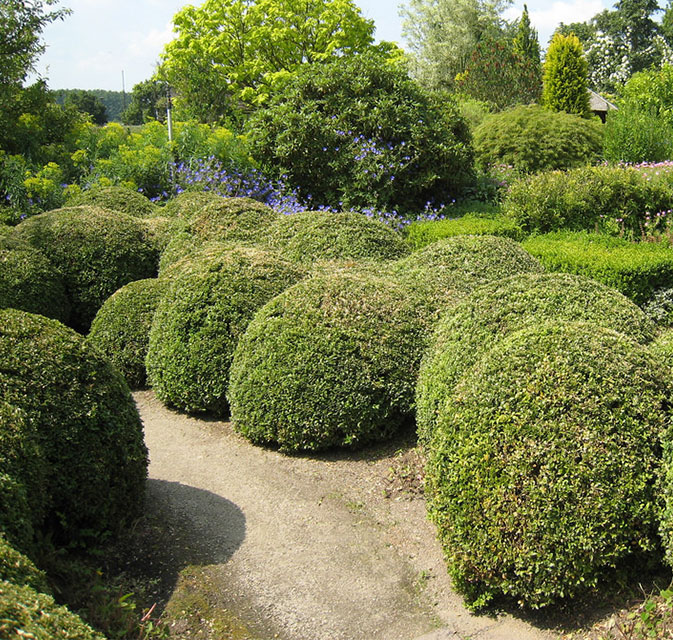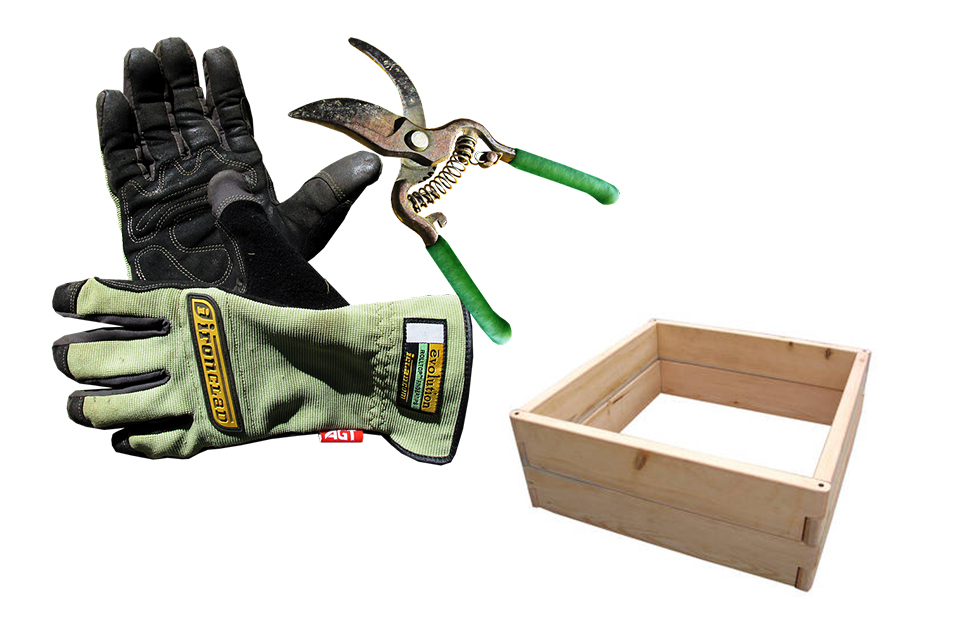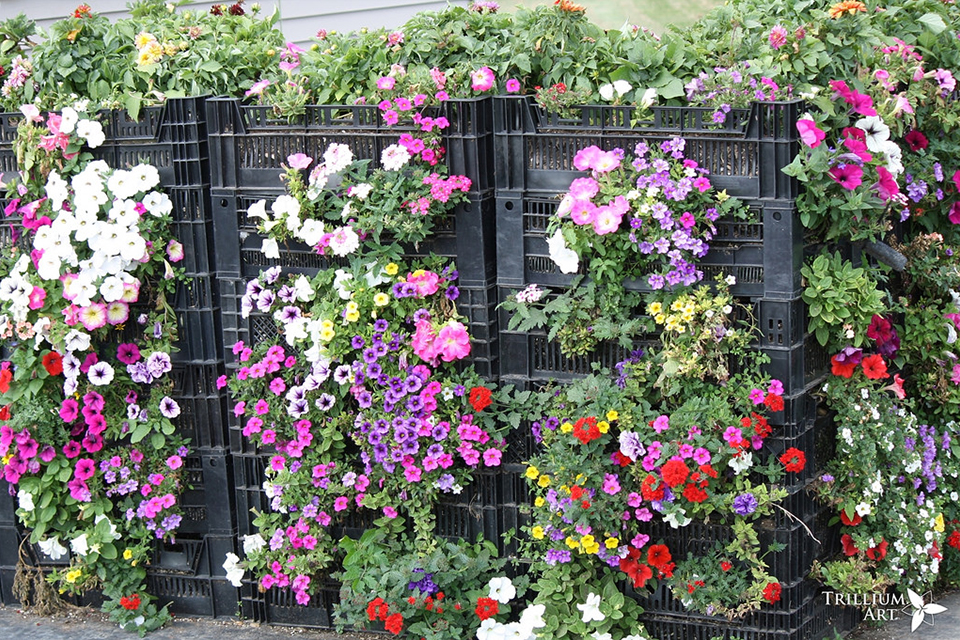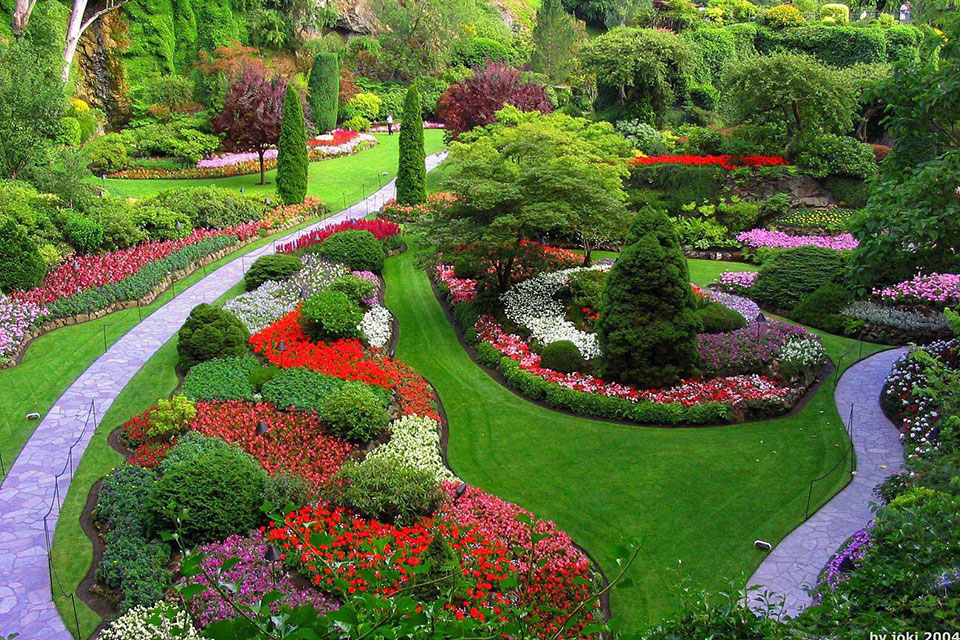
Ornamental gardens have been around since 1500 BC, so why not celebrate history with a summer garden of your own? Summer is the perfect time to take advantage of the diverse colors, shapes, and textures that we can find in plant life. A wide variety of plants, from evergreens to tropicals, thrive in the summer, and it is the best time to grow vegetables and herbs in your
vertical garden. But what do you need to create and maintain a vertical summer garden? And what are the best tools, containers, and plants to use? Knowing the answers to these questions can make all the difference in your gardening success.
When Is the Best Time to Set Up Your Summer Garden?
The first question you must ask when crafting a summer garden is: When do I actually start? Some plants can survive the frigid air of early spring, but most popular summer plants need high humidity, sunlight, and warm temperatures to thrive.
Hardy, Mediterranean plants like olive trees, rosemary, and sage can withstand temperatures below 30 degrees Fahrenheit and are some of the first plants that you can move outside. Your tropical flowering plants — begonias, Mandevilla vines, hibiscus, jasmine, and others — should stay indoors until temperatures are consistently above 50 degrees. Vegetable and herb plants (except for the earlier mentioned rosemary and sage) typically do best above 55 degrees.
Even if the days have gotten warm, keep in mind that nighttime temperatures can often drop below freezing during the spring. Also, remember that potted plants are much more susceptible to frost than their in-ground counterparts!
The actual time of the year that you can begin planting will vary depending on your location. However, this doesn’t mean that you should hold off on prepping your summer garden until this time. As soon as temperatures are above freezing, you can start getting ready for your summer garden.
Choosing the Right Tools
- 1Pruners – If you’re passionate about gardening, the first tool you should invest in is a high-quality pair of pruners. This tool isn’t just for woody perennials, shrubs, and trees. Pruners are also the best tool for trimming and deadheading softer annuals. A good set of pruners will leave a clean cut which is less likely to become infected or allow rot to set in.
- 2Planter inserts – Planter inserts help you save soil and prevent your pots from getting too heavy – which is extra important when creating a vertical summer garden. There are several sizes and shapes on the market, and you can also make your own with styrofoam or recycled pieces of plastic or wood.
- 3Gloves – Gardening is dirty work, so be sure to invest in a pair of gloves that will protect your hands. Sturdy gloves are especially important if you plan to grow roses, blackberries, or raspberries.
- 4Watering wand or can – Watering hanging plants can be difficult, but using a hose with a watering wand attachment can make this task much more comfortable. If you prefer to use a watering can, or if you don’t have convenient access to a hose, you can purchase a squeezable watering can that allows you to water high plants easily.
Prepping Your Vertical Garden Space
Before you can add plants to your vertical summer garden, you need to prep your chosen space. If you are revisiting a garden from previous summers, then most of the planning is already done. However, if you are starting a vertical garden for the first time, then you need to decide where you will place your planter, pot, or trellis.
Window Boxes, Planters, and Hanging Pots
Granted, you don’t have much control over which direction your windows or patio face, especially if you live in an apartment or condo. But if you have the choice, the best location for your plants is on a south-facing exterior wall. East- and west-facing exteriors are also okay choices, with north-facing exteriors being the least ideal.
You should securely fashion window and patio boxes to the desired spot. You can find planter hanging kits at most hardware and gardening stores. The last thing you want is to be liable for one falling onto a passerby (in fact, some leases prohibit them for this very reason!) Using inserts will help cut down on some of the weight, but rough weather and strong winds can wreak havoc on a poorly secured planter.
Ensure that your chosen planter, pot, or window box has plenty of drainage holes. If your planter didn’t come with these holes, you need to drill some before hanging it up. This is a fairly easy task with a household hand drill.
If you’re using a pot or planter from previous years, you can reuse any leftover soil that you’ve saved. However, we do recommend supplementing your planters’ soil (new and old) with some compost. This will give your plants added nutrients that store-bought potting soil doesn’t provide.
Trellises
Trellises come in a wide range of sizes: from those that fit into small pots to those that reach several stories high. These structures are a great way to add a statement summer garden to your home’s exterior. They are also the perfect home for climbing vegetables like tomatoes, cucumber, and peas.
Just like planters and pots, south-facing exterior walls are the best location for a trellis. If you are anchoring your trellis directly into the ground, most manufacturers recommend driving the posts at least two feet deep. You can secure a trellis to almost any home exterior, including vinyl, wood, and brick.
If you are installing a trellis garden for the first time, we recommend adding some potting soil and compost to the natural soil already present. While you do not need to replace the ground soil completely, this is an excellent way to ensure there are enough nutrients present for your plants to thrive. If you want to invest a little extra time and money, you can perform a soil quality test to find out exactly what your property’s natural soil is missing.
Selecting the Right Plants
Now you’ve prepped that your summer garden space, it’s time for the fun part: choosing the plants! If you’re planning to fill your summer garden with flowers, you have two main options: plant short-term annuals or invest in maintaining perennials.
Annuals are plants that, biologically, only survive for one season or year. Well-known annuals include petunias, marigolds, dahlias, and coleus. These plants are great for adding bursts of color, and for those who like to change up their garden design every year.
Perennials are plants that typically go dormant during the winter months while growing during the summer, living for years or sometimes decades. Common perennial flowers include roses, daylilies, peonies, and daisies. Although perennials often function as permanent landscaping plants, with the right care, they can thrive in pots and planters for many years. Unless you live in a warm climate, though, these plants will need to be covered or brought inside during colder months.
If you plan to plant flowers on your trellis, they will need to be a climbing variety. Popular choices include climbing roses and wisteria, which can both be a perennial if planted in the appropriate climate. Morning glories and black-eyed Susan vines are two excellent annual climbers.
How to Create a Professional-looking Floral Design
A common strategy in professional floral design includes selecting plants from three categories: thrillers, fillers, and spillers. Some national plant retailers have even started labeling their plant varieties with these names to help the layman gardener design like a pro. Here’s how to use this strategy in your summer garden:
Thrillers
These are tall flowers or plants that you can place in the center of round pots and the back of square or oblong planters. Common examples include ornamental grasses, elephant ears, and canna lilies.
Fillers
These are short, bushier plants that you can place around the thriller to fill out the bulk of the pot or planter. Popular fillers include impatiens, coleus, and geraniums.
Spillers
These are trailing, viny plants that spill over the edges of your pot or planter. Alternate along the border with fillers to create a lush, diverse arrangement. Creeping Jenny, sweet potato vine, and petunias are all popular spillers.
If you’re designing a hanging summer garden, we suggest making spillers your focal point. When hung, these plants create gorgeous waterfalls of foliage and flowers!
Watering Your Vertical Summer Garden
The best way to check if your plants need water is by testing the soil’s moisture. When it’s time for water, the soil will be light brown, like a paper bag, and be dry to the touch at the surface. You should add water to your pots and planters until it flows from the drainage holes, as this means that the soil around the roots is completely saturated.
Bright sunlight and high temperatures can dry out a potted plant remarkably fast. So during the hottest months, you will probably need to water your summer garden every day or even twice a day. Rainy days will soon become your favorite!
If daily watering isn’t really your style, then you can set up a drip irrigation system. This watering system can hydrate all of your pots simultaneously and with very little maintenance. But some gardeners might find having a hose wrapped around their home or patio to be rather unsightly.
Fertilizing Your Garden
To keep your potted summer garden looking its best, you should fertilize up to twice a week. Be sure to use an organic, water-soluble fertilizer instead of a chemical one. Since you will be applying the fertilizer so often you don’t want to risk leaving chemical burns on your plants’ foliage.
When prepping your summer garden, we recommended that you add compost to your pots’ soil. If you plan on reusing your potting soil, it’s good practice to supplement the soil with compost again at the end of the summer. This will replenish some of the lost nutrients and help prepare your planters for the coming year.
With so many beautiful plants and a myriad of gardening options to help you along no matter where you live, now is the time to start planning and planting your vertical summer garden.







